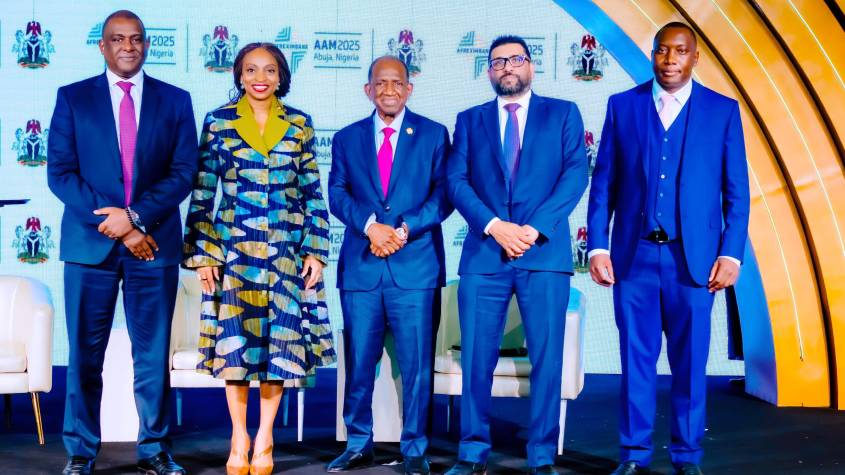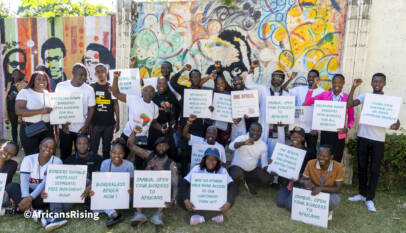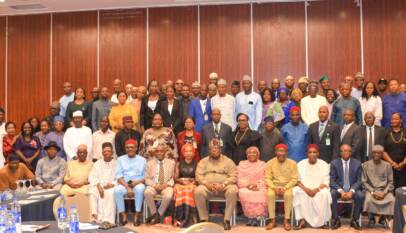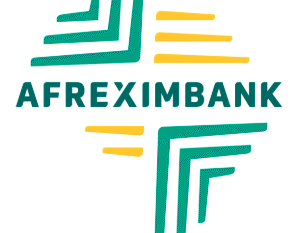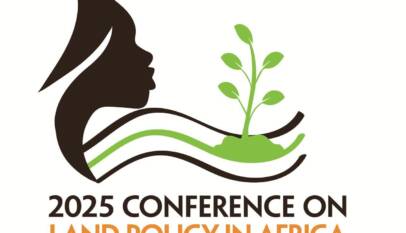Afreximbank: Charting a Practical Roadmap for AfCFTA Implementation
The 2025 Afreximbank Annual Meetings (AAM2025) served as a critical platform for fostering multistakeholder dialogue on accelerating Africa’s economic integration through the full implementation of the African Continental Free Trade Area (AfCFTA).
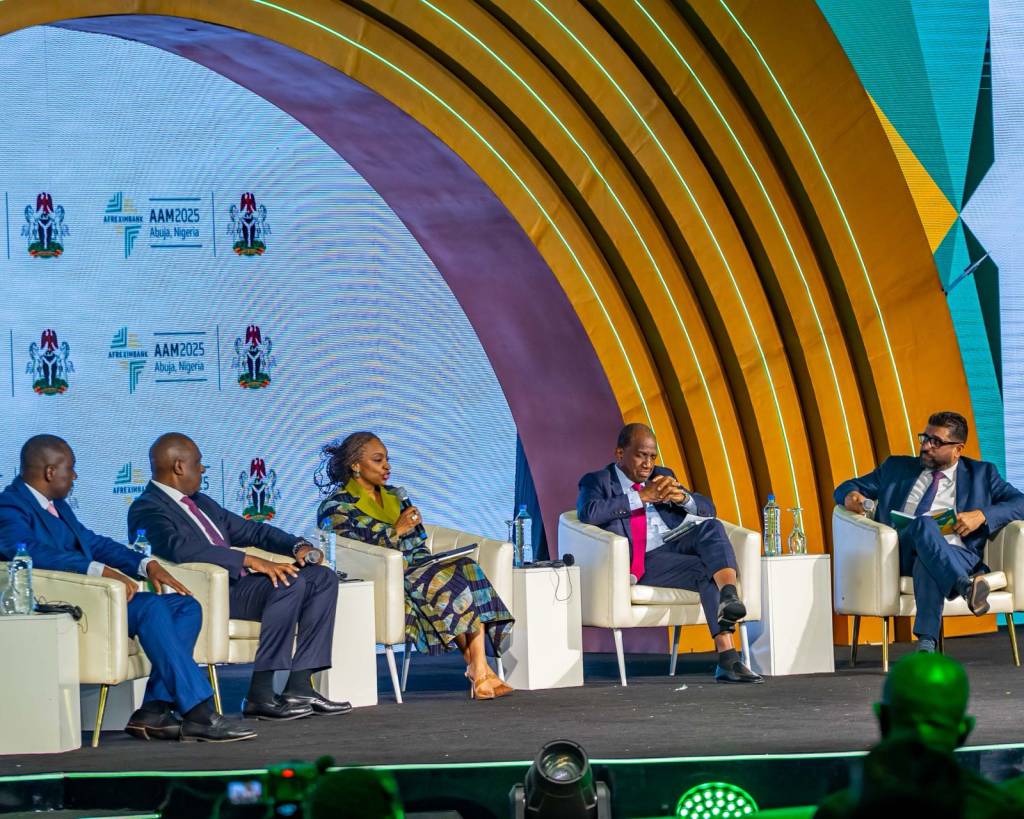
One of the most engaging sessions of the four-day Afreximbank Annual Meetings (AAM2025) held in Abuja, Nigeria, in June was themed: “Realising the Vision of Africa’s Founders: Progress Towards Africa’s Trade and Economic Integration,” bringing together a diverse array of pan-African stakeholders—including public sector leaders, private sector actors, and development finance institutions —who provided a practical path for fast-tracking AfCFTA’s implementation.
AfCFTA Secretary General Wamkele Mene opened the session with a compelling thematic address tracing both the AfCFTA’s historical foundations and its contemporary urgency. He underlined the need to dismantle colonial economic legacies and highlighted key milestones— from widespread ratifications to progressive tariff reductions— positioning the pact as a generational imperative for attaining Africa’s economic sovereignty and industrialisation.
Moderated by Yusuf Daya, Director in charge of AU/AfCFTA Relations and Trade Policy at Afreximbank, the panel featured key voices including Nigeria’s Minister of Industry, Trade and Investment, Dr. Jumoke Oduwole, Mr. Abdoul Aziz Ba, CEO of the African Trade and Distribution Company (ATDC), and Dr. Gainmore Zanamwe, Director for Trade Facilitation and Investment Promotion at Afreximbank.
The panelists shared practical enablers for transforming the AfCFTA’s aspirations into tangible economic outcomes. These included actionable policy reforms, innovative financing strategies, and robust institutional collaborations—elements essential for moving the AfCFTA from a political agreement to a practical engine of Africa’s economic transformation. The discussions reinforced the consensus that successful economic integration must be anchored in trade-enabling infrastructure, strong multi-stakeholder coordination, and catalytic financing solutions.
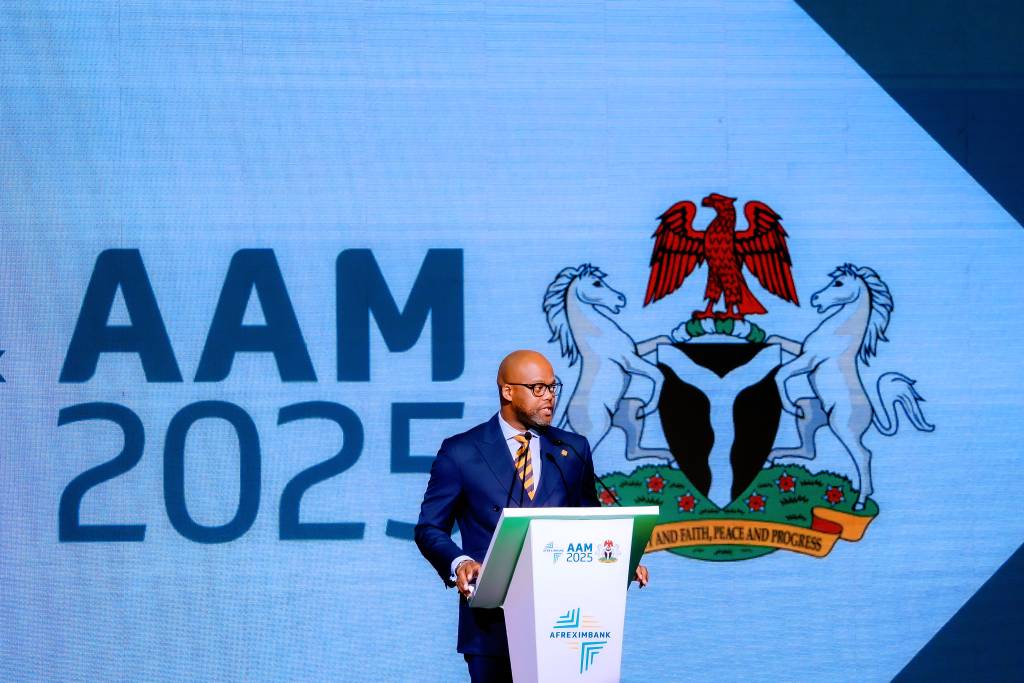
AfCFTA: From Liberation to Integration — The Founders’ Economic Dream
In his thematic address, Mr. Wamkele Mene described the AfCFTA as the most ambitious economic reform initiative since the founding of the Organization of African Unity (OAU), tracing its roots to the aspirations of Africa’s founding fathers, who in 1963 envisioned not only political liberation but also economic integration as the cornerstone of the continent’s long-term prosperity.
“Our founding mothers and fathers had two core objectives. First, to liberate our continent from the shackles of colonialism — a goal that was largely achieved with the defeat of apartheid in South Africa. Second, they envisioned the economic integration of Africa. While political liberation has been realized, the dream of economic integration has remained elusive for many decades,” Mr. Mene remarked.
The AfCFTA Secretary General highlighted AfCFTA’s progress: 49 ratifications, trade-enabling tools like Pan African Payment and Settlement System (PAPSS) and the AfCFTA Adjustment Fund, and the launch of AfCFTA protocols on investment, digital trade, women, and youth. He emphasized that African countries have no business conducting intra-African trade in the U.S. dollar or other foreign currencies, advocating instead for the expanded use of local currencies through PAPSS as a critical step toward achieving true economic sovereignty.
Mene cautioned against complacency, noting that Africa’s integration efforts continue to face significant hurdles, including inefficient customs systems, high trade finance costs, and the sluggish implementation of critical protocols such as the AU Free Movement Protocol. “The AfCFTA is a rules-based, legally binding multilateral trading system. But without strong institutions, effective financing mechanisms, and sustained political commitment, its benefits will not trickle down to SMEs, farmers, and other grassroots economic actors.”
Nigeria Strengthens AfCFTA Implementation Through Coordinated Action
Dr. Jumoke Oduwole, Nigeria’s Minister of Industry, Trade and Investment, reaffirmed the country’s unwavering commitment to AfCFTA implementation through a multistakeholder-driven approach. She noted that Nigeria is the first country to complete its inaugural five-year AfCFTA implementation assessment. To ensure policy coherence and effective execution, the government has established a Central Coordinating Committee that aligns the efforts of key institutions—from customs authorities to standards agencies—under a unified national strategy.
The Committee serves as a unified platform to align trade-related reforms, eliminate bottlenecks, and accelerate AfCFTA implementation at the national level. It brings together all relevant government agencies—including the Nigeria Customs Service (NCS) and the Standards Organisation of Nigeria (SON)—to work collaboratively with the private sector, ensuring a coordinated and efficient approach to maximizing the benefits of the agreement.
Highlighting practical implementation milestones, the Minister cited collaborative initiatives with development partners such as the UNDP, including the establishment of air cargo corridors and the identification of demand hotspots for Nigerian goods. These initiatives, she explained, form part of a broader national strategy aimed at linking Nigerian MSMEs to viable markets across the continent—facilitating smoother, faster export processes and minimizing logistical bottlenecks.
“We negotiated a new air cargo corridor with Uganda Airlines and mapped out 13 countries across Southern and Eastern Africa where Nigerian goods are in high demand. We have also released a practical toolkit that highlights these markets—an essential resource for the private sector, particularly MSMEs, to identify where their products are needed,” she explained.
ATDC: Bridging Africa’s Trade Aggregation and Logistics Gap
Mr. Abdoul Aziz Ba, CEO of the African Trade and Distribution Company (ATDC), says his organization is directly responding to the systemic fragmentation of Africa’s value chains and trading systems by tackling the structural barriers that hinder small businesses and commodity producers from fully participating in intra-African trade. “The core mission of ATDC is to act as the African trader for commodities within the continent—facilitating the movement and transformation of goods while also providing critical logistical support.”
Mr. Ba emphasized the ATDC’s core mission of establishing a continental trading company that aggregates local commodities, builds logistics capacity, and facilitates seamless cross-border trade. By working closely with national partners and leveraging regional industrial zones, ATDC aims to bridge critical gaps in intra-African commerce. “Our main job is to buy from local communities, aggregate different commodities, and provide the logistics infrastructure needed to move goods across the continent—from soft commodities to oil and other essential products.”
This approach, the ATDC CEO says, is designed not only to create sustainable markets but also to attract investment into intra-African logistics, with country-level entities playing a pivotal role in scaling aggregation efforts and building trust with local producers. “We also aim to establish local ATDC subsidiaries in every country to nurture and expand these initiatives. These national entities will serve as platforms for empowering local businesses, strengthening supply chain coordination, and promoting value addition at the grassroots level.”
Mr. Ba says significant challenges remain—particularly around customs inefficiencies and clearance delays. “This is why collaboration is essential. Policymakers, strong financial institutions, and the private sector must come together and build on the progress we have already made. Africa’s infrastructure has improved considerably, but logistical bottlenecks—especially at customs—still hinder trade. We need to achieve the scale and volume necessary to attract major shipping lines, and that’s precisely what ATDC is working toward.”
Afreximbank Unveils Flagship Initiatives to Accelerate Intra-African Trade Integration
Dr. Gainmore Zanamwe, Director for Trade Facilitation and Investment Promotion at Afreximbank, provided a comprehensive overview of the Bank’s landmark initiatives aimed at operationalising the AfCFTA and deepening trade integration. Among these is the $1 billion African Collaborative Transit Guarantee Scheme, which enables importers and exporters to move goods across borders without upfront customs duties or undue delays, significantly enhancing the efficiency of intra-African trade.
“We are already working with some of our partners—Zephyr, which is a commercial insurance entity. We are already issuing transit bonds that will actually ensure that trucks do not spend a lot of time at the borders, but can move seamlessly. It could be from Lagos all the way to Abidjan with a single transit bond. We are losing about $5 billion annually because we are not trading in African currencies but PAPSS is now operational with 16 central banks and more than 150 commercial banks already onboard,” narrates Zanamwe.
Dr. Zanamwe explained that PAPSS now enables businesses to trade using local currencies, advancing the goal of financial sovereignty across the continent. He added that, as part of its broader digital transformation agenda, Afreximbank has launched a suite of other innovative platforms, including the African Trade Gateway (ATG), MANSA—a centralized Know Your Customer (KYC) and due diligence repository—and Trada, a market intelligence tool designed to simplify trade, enhance transparency, and accelerate regional integration.
“We are working on digital borders to ease the movement of goods and introduce smart gates at key transit points. Our goal is to digitally transform trade corridors across Africa, making border management smarter and faster. Beyond infrastructure, we are supporting regional value chains through targeted financing. This complements our broader innovation drive—including platforms like the ATG, PAPSS, MANSA, Trada, and the Africa Trade Exchange (ATEX)—because for us, the future isn’t just digital; the present already is,” he concluded.
The panel concluded with a powerful reflection on the role of regional institutions and innovation ecosystems in reinforcing AfCFTA implementation. Speakers unanimously agreed that Africa has moved beyond rhetoric—strategic alignment, strong political will, and institutional innovation are now turning the AfCFTA into a practical instrument of transformation, unlocking new opportunities across the continent.

